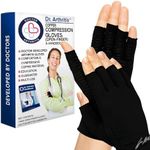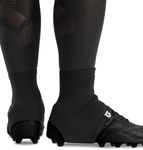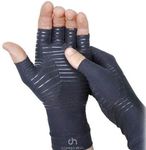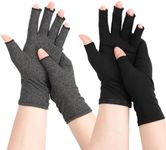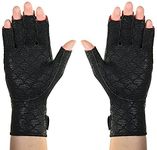Buying Guide for the Best Anti Arthritis Gloves
Choosing the right anti-arthritis gloves can make a big difference in managing hand pain, stiffness, and swelling. The main goal is to find gloves that provide comfort, support, and relief for your specific symptoms. When shopping, it's important to consider how the gloves fit, the type of compression they offer, the materials used, and any additional features that might help with your daily activities. Understanding the key specifications will help you make a choice that best matches your needs and lifestyle.Compression LevelCompression level refers to how tightly the gloves fit around your hands and fingers. This is important because the right amount of compression can help reduce swelling, improve blood circulation, and relieve pain. Compression gloves usually come in light, moderate, or firm compression. Light compression is gentle and suitable for mild symptoms or for wearing throughout the day. Moderate compression offers more support and is good for people with moderate pain or swelling. Firm compression is best for those with severe symptoms but may feel too tight for some users. To pick the right compression, think about how much support you need and how comfortable you feel wearing tighter gloves for longer periods.
MaterialThe material of anti-arthritis gloves affects comfort, breathability, and durability. Common materials include cotton, spandex, nylon, and blends of these fabrics. Cotton is soft and breathable, making it comfortable for all-day wear, but it may not stretch as much. Spandex and nylon blends offer more stretch and a snug fit, which can enhance compression but may feel warmer. If you have sensitive skin or plan to wear the gloves for long periods, look for soft, breathable materials. If you need more support or want a tighter fit, consider gloves with more spandex or nylon.
Fit and SizeFit and size are crucial for both comfort and effectiveness. Gloves that are too tight can restrict movement and cause discomfort, while those that are too loose may not provide enough compression. Most gloves come in different sizes, so it's important to measure your hand according to the manufacturer's instructions. A good fit should feel snug but not restrictive, allowing you to move your fingers freely. If you plan to wear the gloves while doing tasks, make sure you can grip and hold objects easily.
Finger DesignAnti-arthritis gloves come in full-finger and open-finger (fingerless) designs. Full-finger gloves cover the entire hand and fingers, providing warmth and compression to all areas, which is helpful for people with pain in their fingertips. Open-finger gloves leave the fingertips exposed, allowing for better dexterity and making it easier to do tasks like typing or using a phone. Choose full-finger gloves if you need warmth and support for your whole hand, or open-finger gloves if you want to keep your fingers free for daily activities.
Grip EnhancementSome anti-arthritis gloves have textured surfaces or added grips on the palms and fingers. This feature is important if you have trouble holding objects or need extra help with tasks like opening jars or using tools. Gloves with grip enhancement can make daily activities easier and safer. If you often struggle with slippery objects or need to use your hands for work or hobbies, look for gloves with this feature.
Ease of CleaningSince anti-arthritis gloves are often worn for long periods, it's important that they are easy to clean. Some gloves are machine washable, while others require hand washing. Machine-washable gloves are more convenient for regular use, while hand-wash-only gloves may last longer if cared for properly. Consider how often you plan to wear the gloves and how much effort you're willing to put into cleaning them when making your choice.





